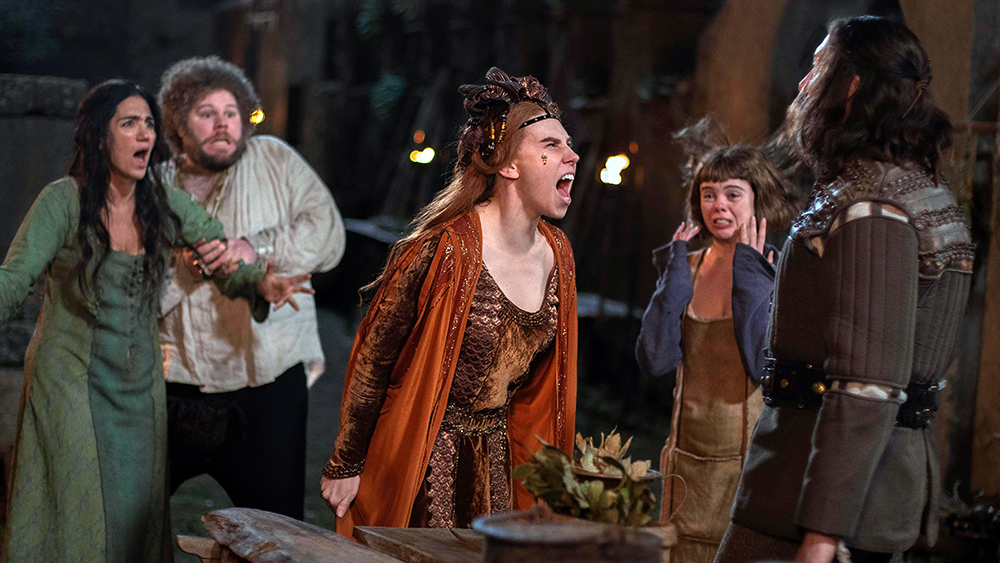One strange thing about the pandemic is the effect it had on art. Economically, it weakened and destroyed arts organizations of all stripes. It’s even harder to make a living as a musician or actor today than it was in 2019 — and it’s not like it was easy in the Before Time. It’s also interesting that there is not a lot of great art that came from enduring the worldwide trauma.
It’s not like artists weren’t doing anything during the pandemic. Trapped in their homes for months at a time, working through anxiety, artists made a lot of art. Some of it, like Bo Burnham’s Inside, was pretty good. But once the pandemic was over, audiences were also over it. Nobody wants to think about the dark, scary days of the pandemic, so nobody wants to see movies or listen to music which brings those feelings back. Turns out, this is not a new phenomenon. Very little memorable art came out of the 1918 flu pandemic. After the mass death, people just wanted to party.
But there is at least one great work of art which happened as a result of a pandemic. The Decameron was written by Giovanni Boccaccio after the Black Death swept through Italy in 1348. In it, a group of young people flee the pestilence in Florence to hole up in a secluded country villa. There, they pass the time by spinning stories, some real, some made up. The 100 short stories Boccaccio wrote were revolutionary, both for the beauty of his prose and the positively liberated way he viewed women. The stories were sometimes funny, sometimes bawdy, and sometimes tragic. Chaucer was inspired by The Decameron to make his own loosely connected tome of short stories in English, The Canterbury Tales.
Producer Kathleen Jordan responded to Covid lockdown by revisiting The Decameron. The book’s episodic nature makes it perfect for television adaptation. In the pilot episode, “The Beautiful, Not-Infected Countryside,” the young nobles of Florence are invited to ride out the wave of infection at Villa Santa, the estate of the Visconte Leonardo. Pampinea (Zosia Mamet) is Leonardo’s arranged fiancé, but she has never actually met the guy. She sets off to the villa with her impressive dowry and loyal servant Misia (Saoirse-Monica Jackson). Unbeknownst to Pampinea, Misia has stowed her commoner lover Parmena (Tazmyn-May Gebbett) in a barrel for the trip. It’s a dangerous gambit because not only is lesbianism frowned upon in heavily Catholic medieval Italy, but also because Parmena is showing signs of the plague.
Filomena (Jessica Plummer) desperately wants to get out of Florence and maybe meet some marriageable men at the villa, but she and her servant Licisca (Tanya Reynolds) are stuck tending to her elderly father, who is infected with plague. When he finally passes, their trip to the villa has scarcely begun before the pandemic tensions boil over, and Licisca pushes Filomena over a bridge. When she arrives at the villa, Licisca assumes her mistress’ identity.
Panfilo (Karan Gill) and Neifile (Lou Gala) present as an extremely pious couple. But the secret to their chaste lifestyle is that Panfilio is gay. Once at the villa, they both become infatuated with Dioneo (Amar Chadha-Patel), a himbo doctor in the employ of Tindaro (Douggie McMeekin), who is as wealthy as he is arrogant.
The visitors to the villa are greeted by Sirisco (Tony Hale), the steward of the villa, and Stratilia (Leila Farzad), the cook, who have a dark secret: Leonardo, the master of the house, died of the plague after he issued his invitation. As long as no one finds out, the servants can continue to be master of their own fates. The ensuing struggle for control of Leonardo’s property provides much of The Decameron’s overarching plot. The ensemble cast doesn’t tell stories as much as they live them, in the awkward and socially charged interactions that make up the series’ humor.
What keeps you off-balance in The Decameron is that anyone can die at any time. And they do, in various states of indignity and hilarity. The series’ casting is outstanding, and each of the ensemble gets a turn in at least one great scene. Neifile gets stuck in a well and won’t come out until God himself rescues her. The militaristic Tindaro is also a hypochondriac, and his doctor is milking the delusion for all its worth. As the social order breaks down, a group of mercenaries show up, and the nobles discover their claim to privilege disappears in the absence of guys with swords who will obey their commands.
As you might expect from such an episodic format, The Decameron is ultimately uneven. Some of the situations fall flat. But when the combination of talented comic actors and absurd situations click, it’s a morbidly good time.
The Decameron is streaming on Netflix.
